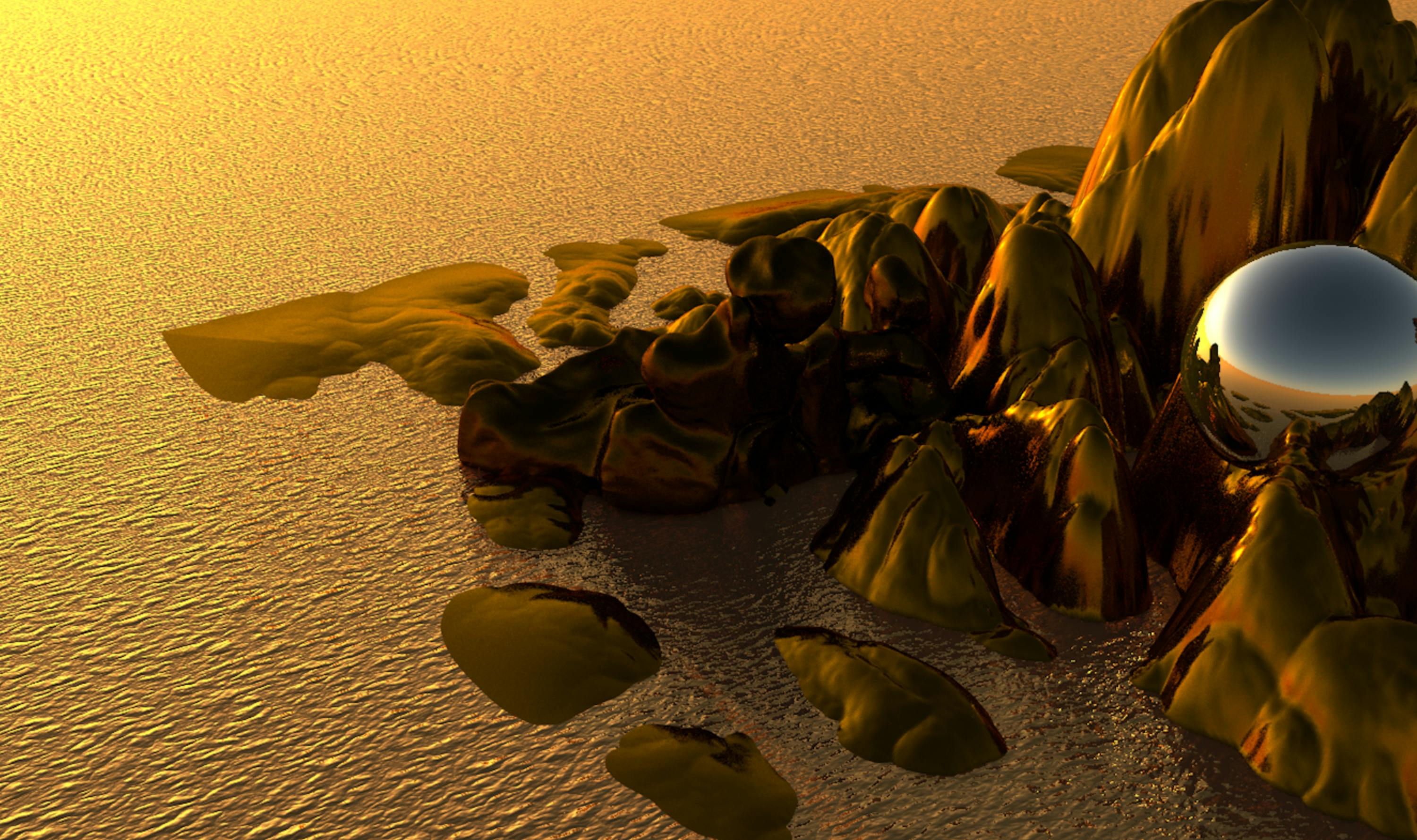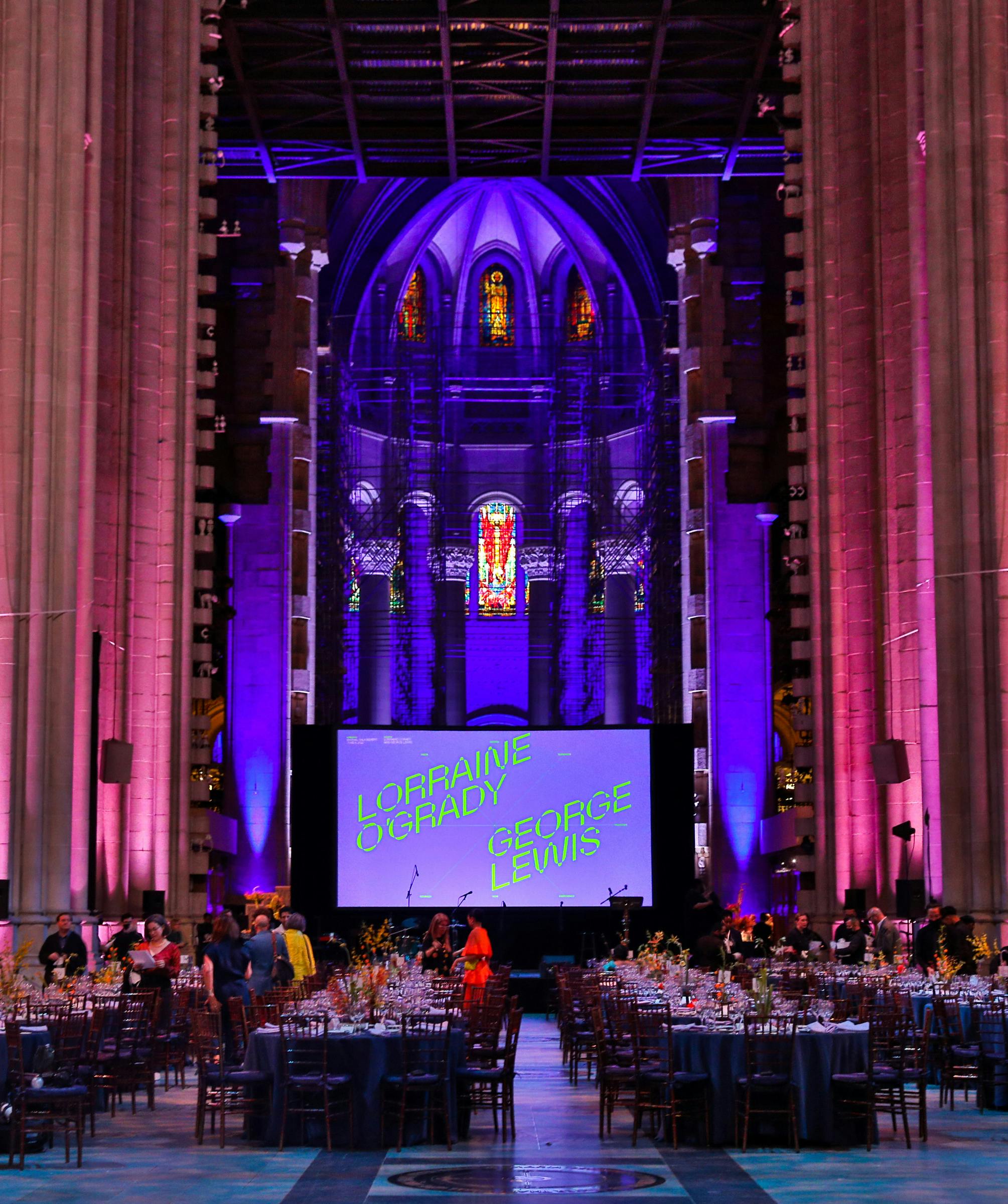
Reimagining Black Futures with Black Beyond
black beyond in conversation with Eileen Isagon Skyers
BLACK BEYOND is an experimental art and design group composed of multidisciplinary artists that come together to reimagine alternate realities for blackness: from an extended reality art exhibition, to designing The Kitchen Gala Afterparty Experience, to explorations of sound as a tool for survival.
Their ideological underpinnings began with a proposal by their now creative director jazsalyn and Neta Bomani for an art exhibition that (like many things) was abruptly postponed due to the COVID-19 pandemic in 2020. Over time, jazsalyn’s continued dialogue with the artists led them to ideate a new kind of exhibition experience, designed and produced with a group of fellow artists, for the digital realm.
The group launched BLACK BEYOND _origins on NewArt.City, and coupled the extended reality exhibition with activations, DJ sets, and performances by TYGAPAW, Ahya Simone, Daniel Brathwaite-Shirley, Yves B Golden, and The Heaux History Project, among others. The fluid, multidisciplinary nature of their programming is intentional: their aim is to cultivate a sense of community through telepresence and create spaces that defy the erasure that is so often normalized across Black communities online. Looking to Legacy Russell’s Glitch Feminism, they wanted to “glitch” the internet with an exhibition that could untether itself from our filtered and algorithmic experiences.
By the time they were finally able to open their first IRL exhibition _assembly, alchemy, ascension [a^3], they had developed a unique cross-platform repertoire that spans visual curation, conceptual language, a dublab radio show, a custom origins typeface, and a community practice.
Naturally intrigued by how they were working to transcend the borders of institutions, domains, galleries, and gatekeepers, I sat down with creative director and founder jazsalyn, along with curators Shameekia Shantel Johnson and Yvonne Mpwo to discuss BLACK BEYOND’s expansive trajectory of exhibitions and events—delving into what it means to reinvent digital material, and reclaim digital space for Black creatives.
Link to full experience
Eileen: Can you tell me a bit about BLACK BEYOND to begin? How did you all meet, and what were your motivations for starting?
jazsalyn: After starting my first semester at The New School, I was confronting my own struggles coming from a modest, single-parent household and migrating from the south. I felt an undeniable calling and sense of responsibility, and I was realizing how few black aspiring artists have access to institutional resources.
Shameekia: Salome Asesga connected me with jazsalyn. We were doing similar work by using institutional resources to invest in a future generation of artists, art workers, and community activists. Since then, I grew more familiar with BLACK BEYOND and how she transformed it from an exhibition concept into a new media research group. She and I kept in conversation, and she reached out to ask if I’d collaborate with her to help produce _origins.
Yvonne: I was also struck by BLACK BEYOND because my current curatorial practice centers Black virtual realities. jazsalyn and I connected after a community meeting hosted by NYFA.
Eileen: Your first IRL exhibition, assembly, alchemy, ascension recently closed at The New School.
The curatorial statement reads as more of an open question:
a^3 serves as a critical analysis of black metatheories and how they relate to each as a continuum of thought and practice [...] This is not a drill. nor an equation, or a curatorial statement. This is a call to action! a^3 asks,what does the BLACK BEYOND mean to you? Was this intentional?
jazsalyn: The curatorial statement is open ended—and for some that may not sit well, because people want answers. I’m into the idea of shifting power dynamics in the art sphere, so I approach the curatorial process as a way of building an intentional community of artists and cultural workers, and allowing our work to be in conversation. I see our programming as an opportunity for us to flesh out answers together.

neptunes horizon II
JAZSALYN

dis place, 2021
Kiara Kalinda, Amirah
Eileen: I'd love to learn more about some of the works exhibited in [a^3].
Can you talk through Zainab Aliyu's Affirmations for My Existence, Jasmine Hayes’s piece, and Jamal Ademola's video work?
jazsalyn: Jamal and Zainab are both of Yoruba descent. And both of their works explore identity through poetry—but it goes much deeper than identity. Their poetry serves as a digital mantra or chant of affirmation. Zai is looking at Sufi poetry, which embodies a spiritual experience, composed around Islamic mystical ideas or themes. Her father is trilingual, and although she doesn't identify as Arabic, that is a part of her identity.
Yvonne: Jazmine Hayes explores themes of Black-femme labor and care through a braided tapestry in her pieces These Hands Work and the three embossments of braids titled “Coded 1-3”. Jazmine is interested in the history of weaving as a communal language that has connected the African diaspora. . The way the braids in these embossments are configured resembles binary codes. Binary codes are the virtual language of world building and inform virtual reality. She, in a sense, digitizes an indigenous language and practice.
Eileen: I’ve definitely thought about how many different cultures, languages, and visual identities are conflated into one singular system of “sameness” through technology. The tech creates this filtration for our entire visual system that precludes, or excludes, so many different histories.
I’m curious: can you share more about your community work? I really appreciate how your work exercises and activates Black space both on and offscreen.
jazsalyn: I’ve curated many different experiences as an extension of BLACK BEYOND: performances, lectures, and a workshop with a meditative sound bath. During one workshop, we wrote letters of support to political activists that had been imprisoned. I am always thinking about how to expand that programming and how to incorporate it into the group exhibition aspect of BLACK BEYOND.
I worked with Jeharrah Pearl and NAVEL LA to produce a sound workshop featuring Akeema Zane, which explores sound as a technology and tool for survival. It’s been a tool of refuge, preservation, and transcendence for the afrodiaspora. Through that workshop, BLACK BEYOND caught the attention of dublab, and I started the radio show alternate realities.

google my memories, 2020
Zainab-Aliyu
Eileen: There was also a sound project in the [a^3] exhibition right?
Jazaslyn: Yes—Johann Diedrick is another artist within the black beyond sphere, exploring the sonic realm. They facilitated a workshop for the [a^3] show called sonic shelters. We wanted to draw parallels between their sonic research and the other [a^3] artists exploring sound or machine learning to reflect, shift, and alter black experience.
Eileen: I was also super impressed by black beyond_origins, your online exhibition on New Art City last year. From herbalist Yves B Golden, to TYGAPAW, you were really able to create a locus of activity online during a time when much of the world was still shut down. Can you tell me a bit more about your experience creating that space?
Shameekia: It was interesting working with the design team and learning how the space functions. It was my first time collaborating on a virtual/XR experience, so figuring out the logistics of storytelling through the digital space gave us a language we wouldn’t necessarily have in the physical world (like hosting a live-streamed TYGAPAW performance in a cave just floating above the water).

Still Prompt de Comando
Vitória Cribb

The Kitchen, 2022
jazsalyn: The concept for _origins emerged from a dark space, and the will to overcome hopelessness. I found hope within friends, fellow femme and queer artists, and art cultural workers who were also challenging erasure, and this community just continued to grow into a team of collaborators, ultimately bringing _origins into reality.
Eileen: A lot of ideas about the “metaverse” have already been co-opted by Big Tech, and there seems to be an assumption that black and queer practitioners have not been core contributors to this kind of work. As we shape the next steps and stages of digital architecture, I'm curious what your thoughts are on how major corporations establish this footprint in digital space—and how we might resist, refuse, or circumnavigate them?
jazsalyn: During lockdown and throughout various phases of the pandemic, the internet wasn’t the safest place for me. I was actually thinking a lot about world-building and safety, and finding our own spaces. So much of black memory has been extracted and projected onto us. It’s like we have to live as this monolith in this world where we aren’t truly ourselves. So I became really interested in the internet, and the different aliases and identities you can embody through and beyond the screen.
The topic of resistance and refusal makes me think of the work I’ve been exploring to recall ancestral intelligence and exercises to re-indigenize technology. REIMAGINE Prototype 002, which is my personal and conceptual work featured in [a^3].
On the surface, it appears as a meditative visualization. But if you dig deeper, it’s a poetic computational study to re-indigenize algorithms and reimagine lost indigenous histories and technologies. Through python syntax, RP 002 hacks and illustrates parallels between the lost histories of afrodiaspora, ancient extraterrestrial civilizations and colonial subjugation. The RP 002 ML algorithm is trained using images collected from NASA and The MET’s “African” Collection database. And the visualization is the algorithm attempting to recreate the images in the dataset.
Eileen: What was it like to curate the Kitchen Gala After-party experience? The event looked incredible, and it honored some legacy artists from The Kitchen’s storied past.
jazsalyn: I'm so grateful to The Kitchen for inviting us to create such a historic moment in time to honor Lorraine O'Grady and George Lewis! For the after-party experience, we invited Holland Andrews and Alima Lee to transcend guests through a hypnotic, sonic portal at the Cathedral of Saint John Divine. The performance was accompanied by ethereal and chaotic light art, creating an immersive audiovisual experience to explore themes such as new dimensions, portal activations, vibrant rebirth and Pluto’s return.
Eileen: Can you share what’s next for BLACK BEYOND?
jazsalyn: It was originally this concept for a group show and now it's this whole art platform, and new media research group. We are figuring out what that means for the future, and what it means to continue to expand in a more intentional way. It's been such a journey that we are taking some time for deep reflection and we want to really embrace that slowness and intentionality.
BLACK BEYOND would like to acknowledge and give infinite thanks to the _origins team members: Amron Lee, Avery Youngblood, Ege Uz, Eli Peralta, Gabe Deko, Kevin Cadena, jazsalyn, Livia Foldes, Sammie Veeler, Regina Flores Mir, Shameekia Shantel Johnson, tee topor.
And exhibition artists: Adama Delphine Fawundu, Akeema Zane, Amirah, Anastasia Warren, Asha Hassan Nooli, Asia Stewart, ed-en, Elizabeth ‘Liz’ Mputu, Fields Harrington, Harmony Holiday, Jamal Ademola, Jazmine Hayes, JAZSALYN, Kiara Kalinda, Lamb, Mika Gadsden, Maliyamungu Muhande, Olivia M. Ross, Terri Ayanna Wright, Vitória Cribb, Willy Ndatira, Xavier Scott Marshall and Zainab Aliyu.
